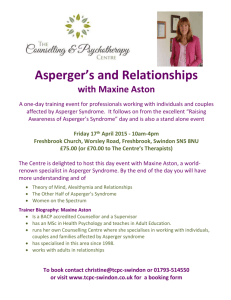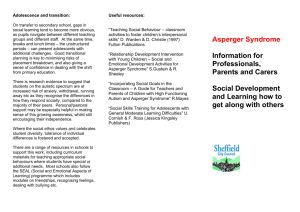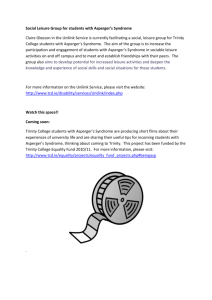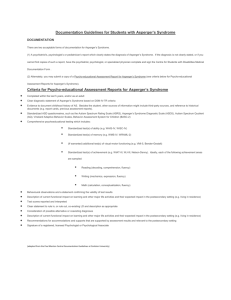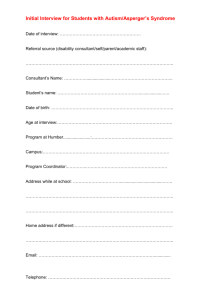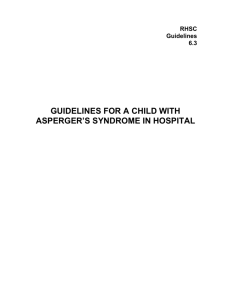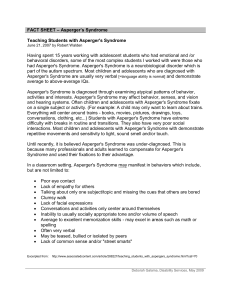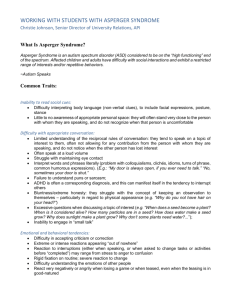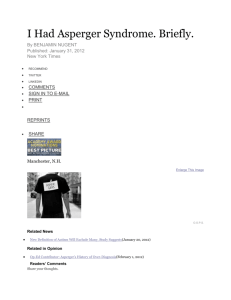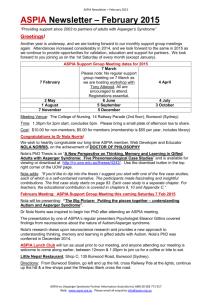A1 Active Participation in Learning
advertisement
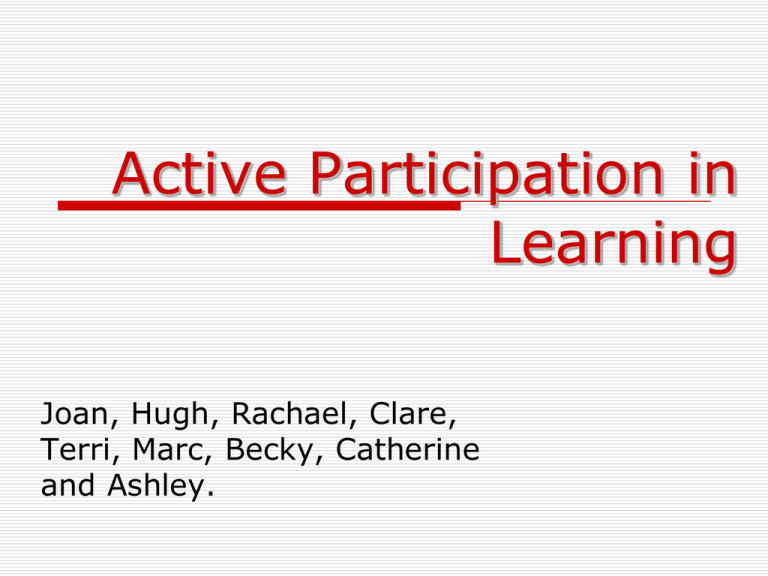
Active Participation in Learning Joan, Hugh, Rachael, Clare, Terri, Marc, Becky, Catherine and Ashley. Introduction Hugh Feminism – Who inspires you? Rachael Views on Education Clare Engaging With Modern Art Terri Ventose Ian Hamilton Finlay, 1991 •What is it? •What does this suggest? •Why? Arman Condition of Woman 1961 •What is it? •What does this suggest? •Why? Learning Outcomes At the end of the session the feedback i received was that it was good to get out of the classroom and experience art in its proper setting. I felt this was an important lesson to take forward as i found different environments can influence the kind and depth of learning achieved. Learning Outcomes I feel that the atmosphere within an art gallery is one which is built on contemplation and reflection, and is impossible to recreate within a classroom. I believe that classes in selected settings can influence the way information is absorbed and can aid understanding of the subject matter. What’s That Bloody Racket?! Marc Aims and Objectives I want to show the group how and why my genre of music helps me and has helped others in the past and also why I love the genre. I want to show the aesthetics of heavy metal and demonstrate how it can be used to deal with frustration. Why do you do this to yourself Marc? I suffer from bi-polar disorder and as a result of this I have violent mood swings. I have found that listening to loud, fast, aggressive music has helped me to calm down during one of these mood swings. Writing has also helped with this because I can articulate my thoughts more clearly in that way than in any other way I have tried. Music as a healer Though I personally have used metal as my preferred genre, it is not the only form of music I have encountered that can help people with their problems. There are many examples of how music can help people overcome their insecurities. Some examples of this are: In the 1980’s when England was going through a recession the punk movement became popular because people were disaffected by the government Gospel music helps people to get through difficult times with songs of hope Even alternative therapies, such as whale song have been proven to be relaxing and can help pregnant women and their babies. Learning through creative play and development Becky Effects of music therapy on SEN. Catherine Why Creative Development? I chose this topic because i thought it would be a good way of demonstrating how children take an active part in their own learning from a young age, as our course is all about ‘active participation in learning’ and taking a more active part in our education. I thought it would be a good way of getting the whole class engaged in the lesson, and working together, and encourage them to get more actively involved with their own learning. Why music therapy and Asperger Syndrome? I chose this because I have a family member that has been diagnosed with having Asperger Syndrome. As I was the only one in the class to be doing Disability Studies as my combined honours degree, I thought it was a good idea to explore Asperger Syndrome and make the class more aware of it. In disability studies we have recently explored different therapies to help engage people with learning difficulties. Creative Play! I looked at the benefits creative play and development has on children’s learning and education from an early age. I wanted to explore how it affects their education and the benefits it has on their learning. Methods I used I set a creative activity to get the whole group involved and participate in the session. They had to work together in pairs, and come up with a short play/ story to go with the models they had made out of play dough, and present it to the rest of the group. This allowed them to use and develop their creative skills, and encouraged them to work together and develop their team building skills. It also enabled them to think about how active participation has impacted on their own learning and educational development and reflect on their own learning. Asperger Syndrome! To explore ways of including people with SEN and those without and involving them both in the same session. To understand that those with different needs can still be included in the same activity without being excluded. Methods I used I used visual, audio and practical aids throughout my lesson to keep everyone engaged. I used discussions as well as practical but educational activities. Activity 1 “Story time with music” Get your thinking caps on! Activity 2 “Tuning into children” Used in Wavertree Children’s Centre, Liverpool. Activity 3 “Emotions through music” It’s time to get messy! Youth Exclusion Ashley Problems at home Poor education, truancy and expulsion Poor housing or homelessness Most common causes of youth offending Peer pressure Drug and alcohol misuse The facts In 2007/8 there were over 42,000 young offenders in the UK aged 10- 17 2928 of them were ages 12 and under The most ‘popular’ crimes were theft and handling and criminal damage accounting for 12,082 of all the offences of which there were 20 categories These are seen as petty crimes with the more serious crimes such as sexual offences and murder/ bodily harm accounting for 294 of the offences In 2007 it was found that over half of the young people in touch with the Youth Offending Teams (YOT’s) were underachieving in school More than a third need help with basic reading and writing; And a very high number had undiagnosed learning disabilities and mental health problems If these problems would have been diagnosed before attending secondary school a lot of youth offenders would have finished school with good qualifications Exploring the campus Hugh Drawing everything together Clare
